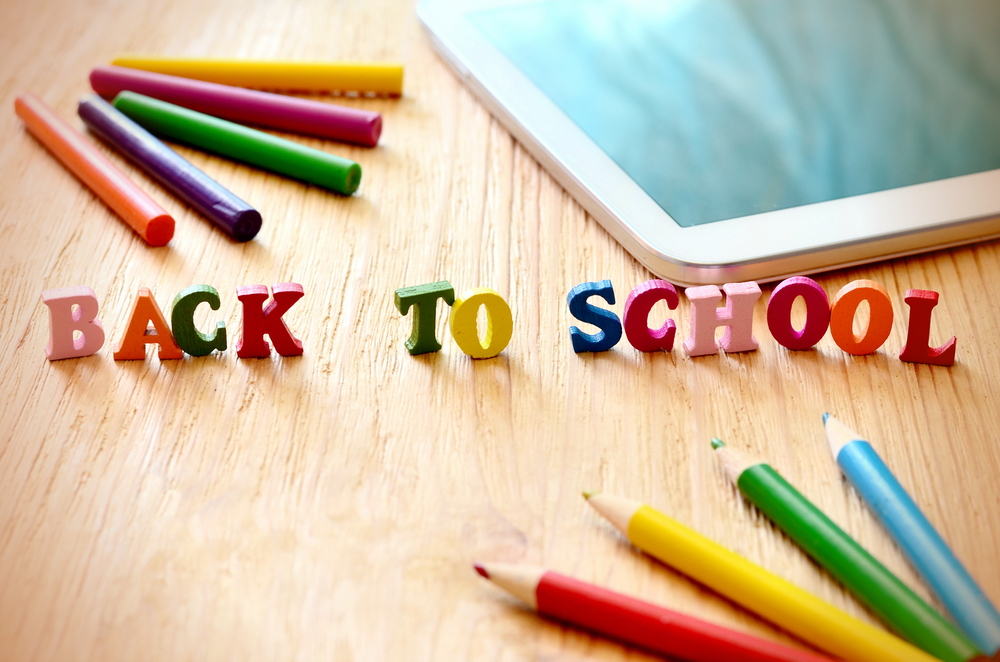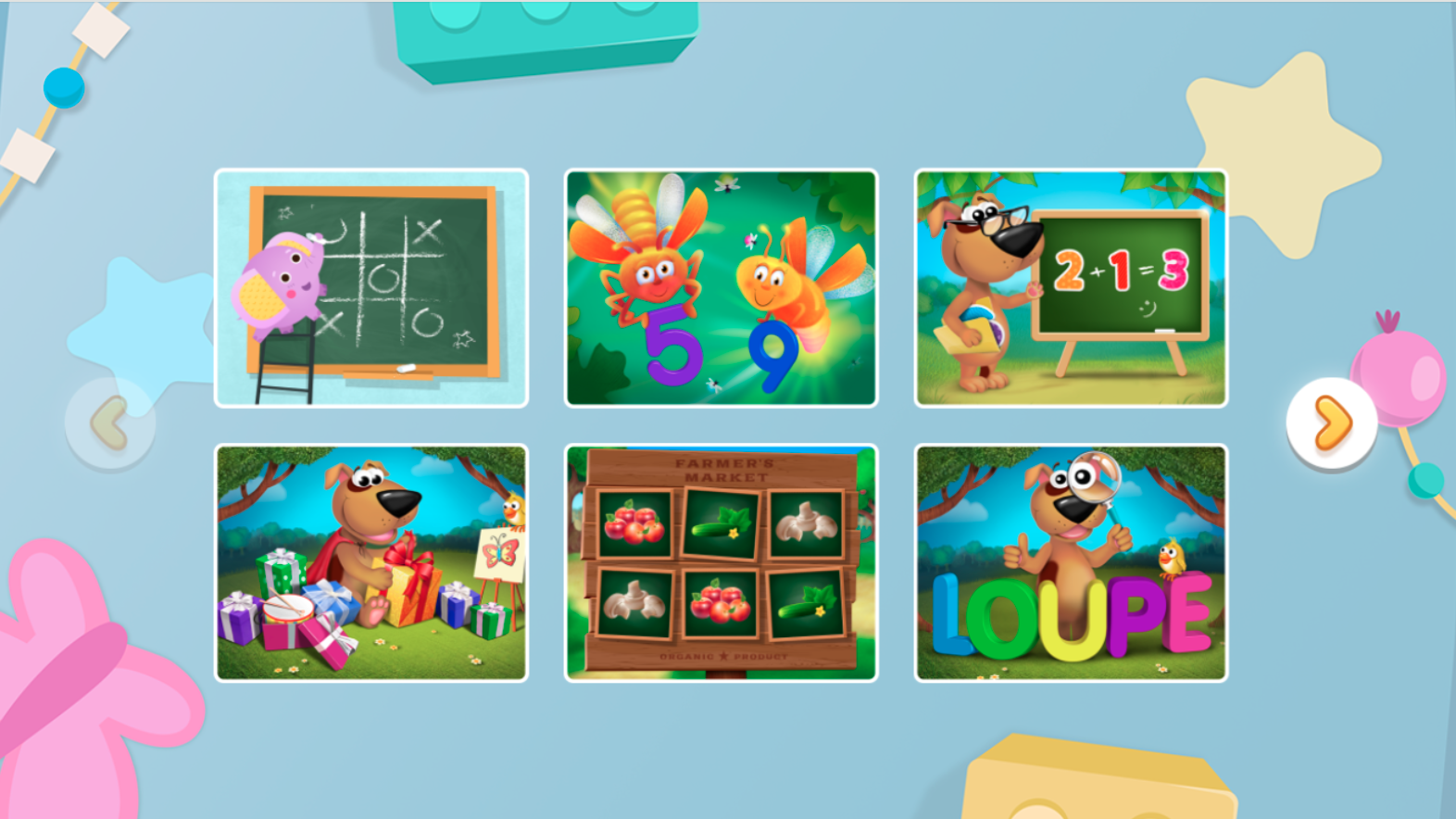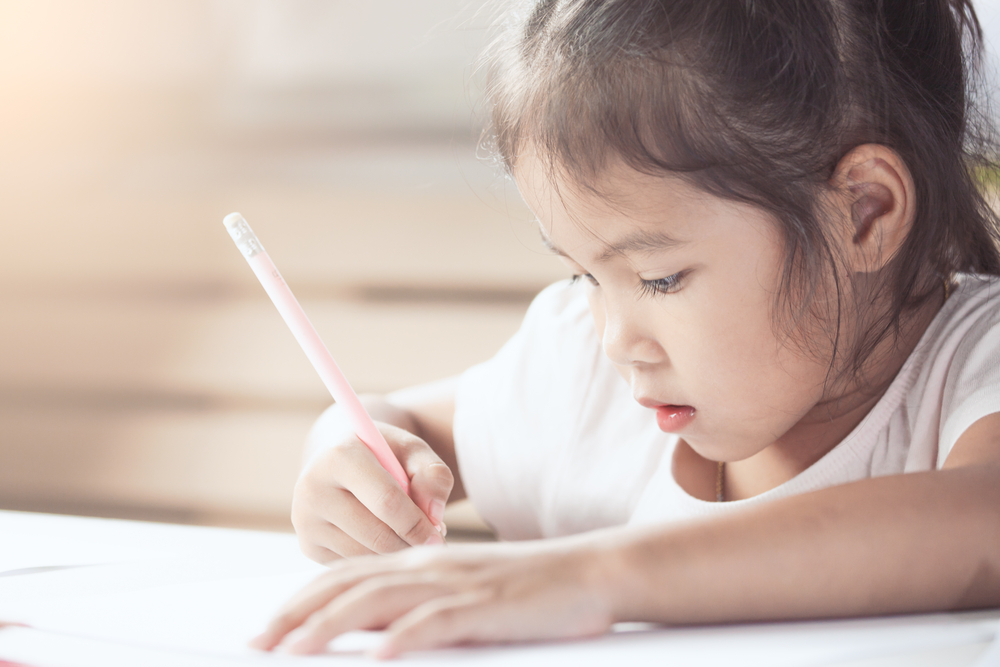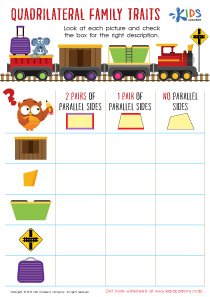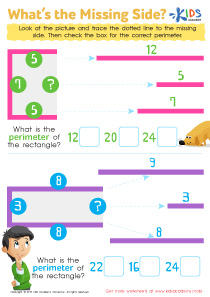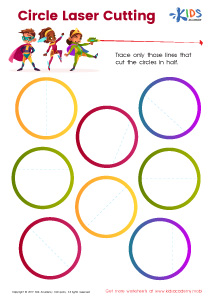Shape Recognition Normal Tracing Shapes Worksheets for Ages 5-9
6 filtered results
-
From - To
Enhance your child's geometry skills with our "Shape Recognition Normal Tracing Shapes Worksheets" tailored for ages 5-9. These engaging activities help young learners identify, trace, and confidently name basic geometric shapes. Perfect for budding mathematicians, the worksheets combine fun exercises with essential educational elements to reinforce shape recognition, fine motor skills, and spatial awareness. Support their learning journey as they gain proficiency in recognizing different shapes through practice and repetition. Whether in a classroom or at home, these worksheets are an excellent resource to make learning both effective and enjoyable. Download now and watch your child's skills soar!
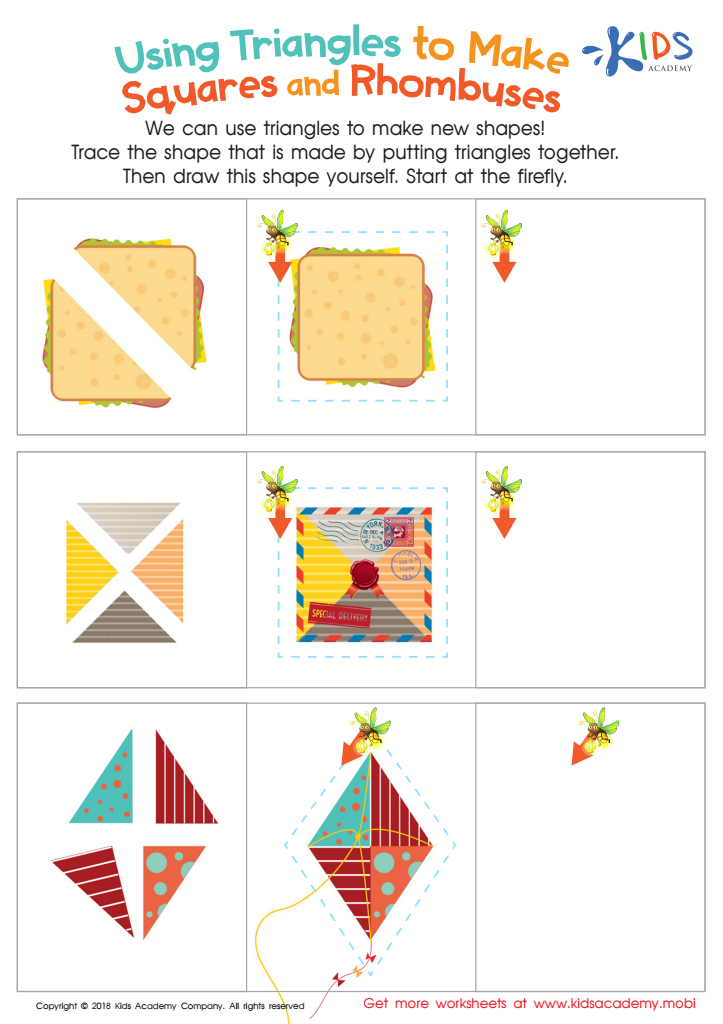

Using Triangles to Make Squares and Rhombuses Worksheet
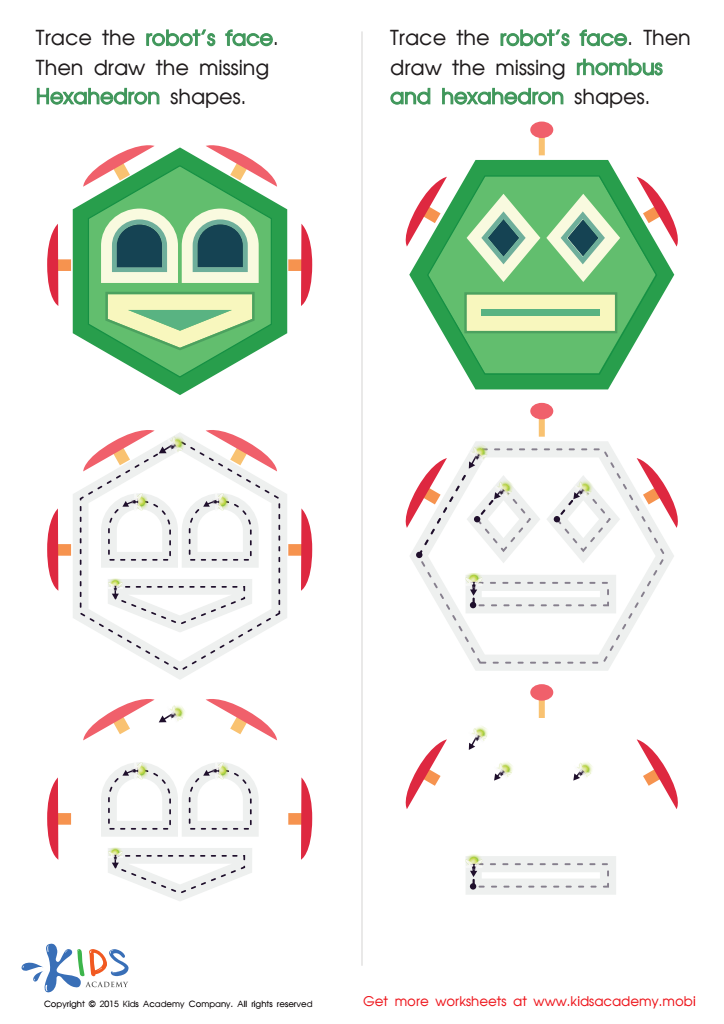

Practice Drawing Hexahedrons And a Rhombus Worksheet
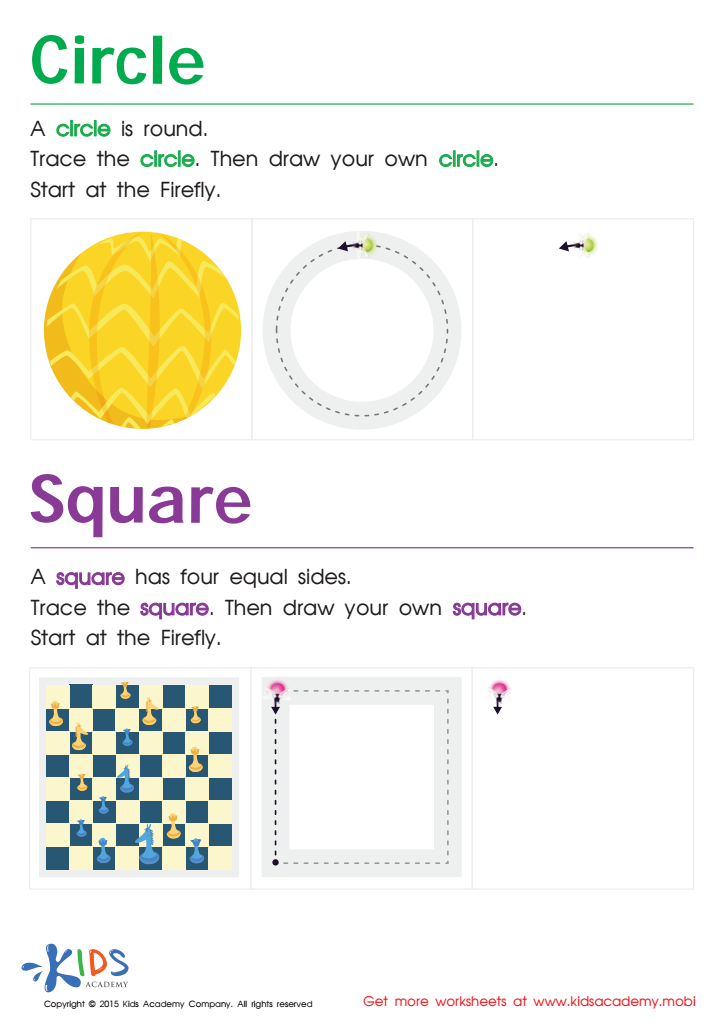

Trace And Draw a Circle And a Square Worksheet
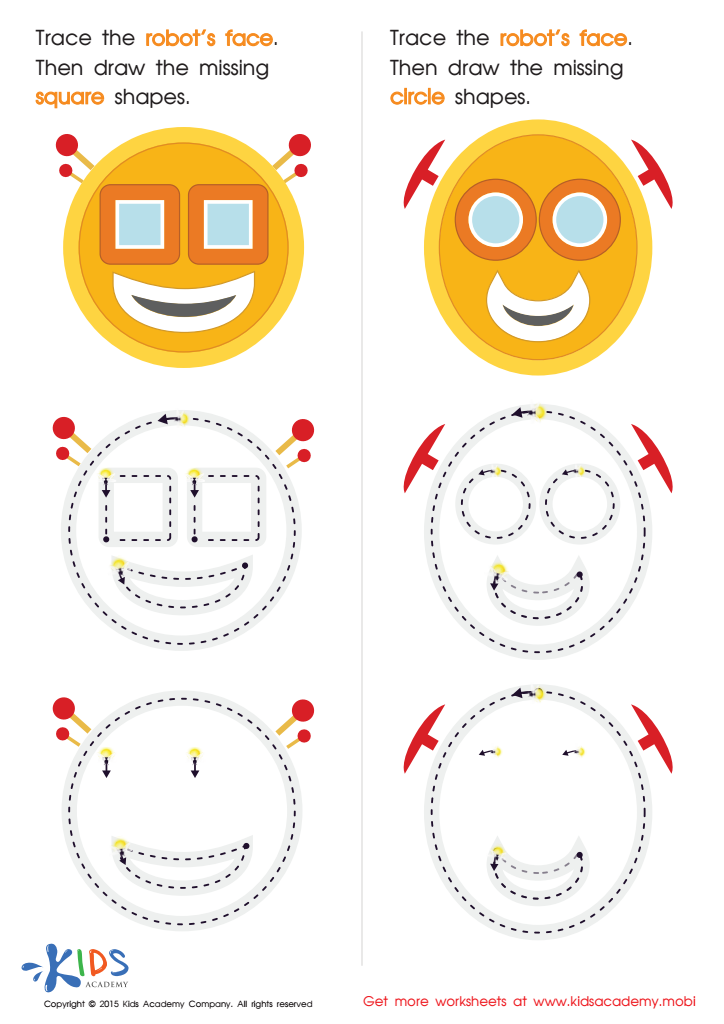

Practicing to Draw Circles And Squares Printable
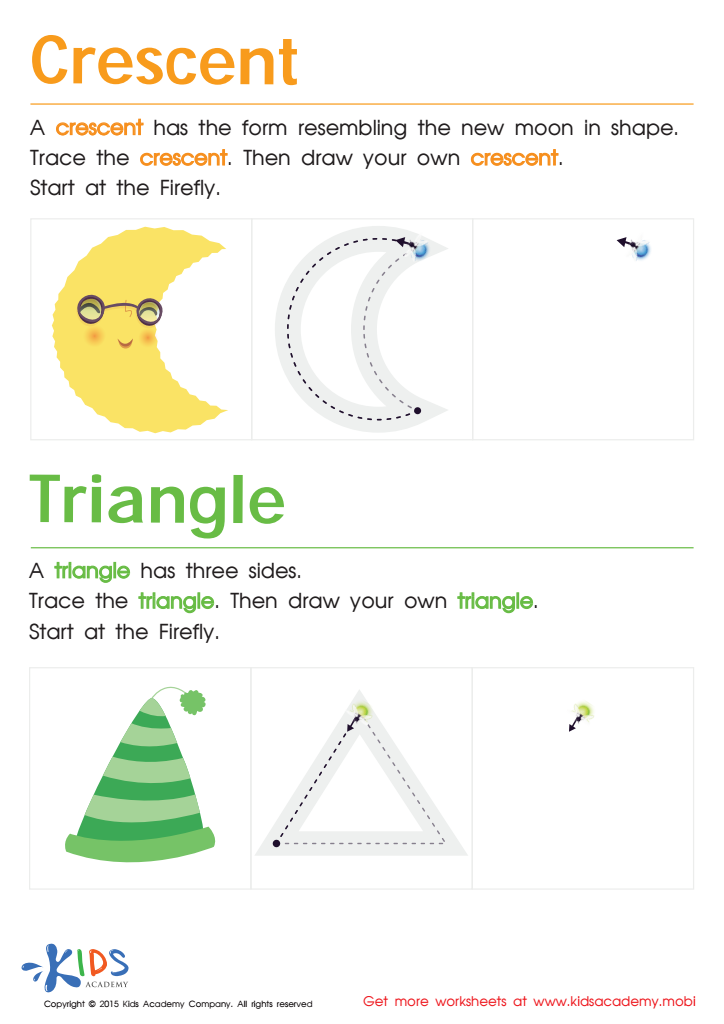

Learning to Draw Crescents And Triangles Worksheet
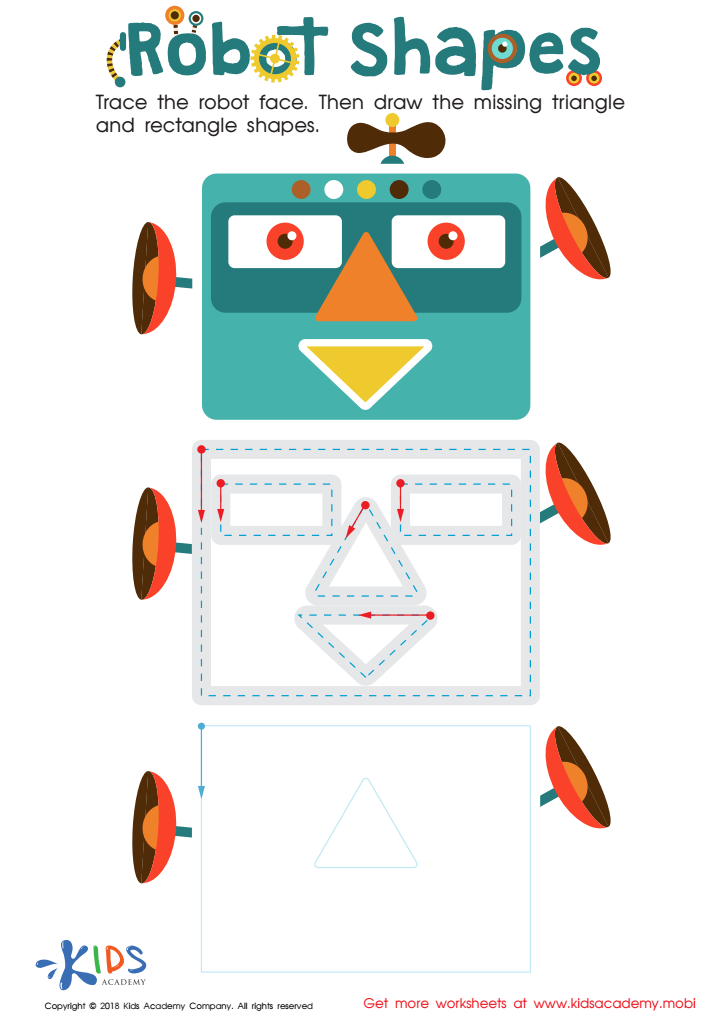

Robot Shapes Worksheet
Shape recognition and normal tracing shapes activities play a critical role in the cognitive and motor development of children ages 5-9. Parents and teachers should care about these exercises because they serve as a foundation for many essential skills.
Firstly, shape recognition is a precursor to reading and writing. Understanding geometric shapes helps children to distinguish between different letters and numbers, which is vital for literacy and numeracy development. Shapes like circles, squares, and triangles play a significant role in letter recognition; for instance, the round shapes in letters such as 'o' and 'q' or the straight lines in 'l' and 't' are more easily identified when children are adept at recognizing shapes.
Secondly, tracing shapes enhances fine motor skills, including hand-eye coordination and dexterity, which are crucial for writing. Tracing helps children practice control over their hand movements, thereby improving their handwriting.
Moreover, engaging in shape activities bolsters spatial awareness and geometric thinking. This helps children understand and navigate the world around them, reinforcing concepts like symmetry, patterns, and spatial orientation.
Overall, incorporating shape recognition and tracing activities into daily routines fosters a well-rounded developmental experience, preparing children for the more complex tasks they will encounter as they progress in their education. Hence, parents and teachers should prioritize these activities to support the holistic growth of the child.

 Assign to My Students
Assign to My Students


